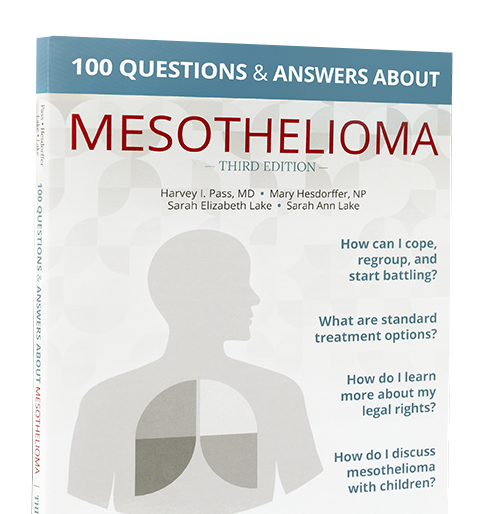Patients with peritoneal mesothelioma have shown promising survival rates thanks to an aggressive treatment option known as Hyperthermic intraperitoneal chemotherapy (HIPEC) combined with surgery.
According to MD Anderson Cancer Center, “HIPEC involves filling the abdominal cavity with chemotherapy drugs that have been heated. Also known as “hot chemotherapy,” HIPEC is performed after the surgeon removes tumors or lesions from the abdominal area.”
After all visible tumors are removed through surgery, “cisplatin, a chemotherapy drug, is heated to 103 degrees Fahrenheit (42 degrees Celsius) and pumped through the abdominal cavity. The patient lies on a special cooling blanket to keep their body temperature at safe levels. Surgeons physically rock the patient back and forth on the operating table for about two hours to ensure that the drug reaches all areas of the abdomen, killing any cancer cells that remain after surgery and reducing the risk for cancer recurrence.”
The second most common type of mesothelioma accounting for 15% to 20% of all mesothelioma cases, peritoneal mesothelioma affects the organs in the abdomen and the abdominal cavity. Malignant pleural mesothelioma (MPM), the most common type of mesothelioma accounting for 75% of all cases, affects the tissue that surrounds the lungs.
Although the overall survival rate for mesothelioma (all types) is around 15 months,
peritoneal mesothelioma patients live for 31 to 36 months. However, the American Cancer Society says these figures “don’t take everything into account.”
“Survival rates are grouped based on how far the cancer has spread, but age, overall health, how resectable the cancer is, type of mesothelioma, how well the cancer responds to treatment, and other factors can also affect outlooks.” For example, studies show that the five-year survival rate is a promising 87% for Stage 1 peritoneal mesothelioma patients who have surgery and HIPEC. And around 53% of Stage 2 patients who undergo surgery and HIPEC have a life expectancy of at least five years.
Thanks to innovative treatment combinations such as surgery and HIPEC, peritoneal mesothelioma survival rates have seen a boost since the 1990s, with patients living the longest of all people diagnosed with mesothelioma.
If you have been diagnosed with mesothelioma, talk to your doctor about newer treatment options such as HIPEC combined with chemotherapy. Treatments such as this, along with clinical trials, are improving outcomes—especially when the disease is diagnosed in its earliest stages. Talk to your doctor about all of your treatment options today.
Sources
“Hyperthermic Intraperitoneal Chemotherapy.” MD Anderson Cancer Center. The University of Texas, 2019. Web. 14 Aug. 2019.
Kim, Joseph, Shanel Bhagwandin, and Daniel M. Labow. “Malignant peritoneal mesothelioma: a review.” National Center for Biotechnology Information (NCBI). U.S. National Library of Medicine (NLM), National Institutes of Health (NIH), 05 Jun. 2017. Web. 14 Aug. 2019.
“Regional Therapies.” CancerCenter.com. Cancer Treatment Centers of America (CTCA), 2019. Web. 14 Aug. 2019.
“Survival Rates for Mesothelioma.” Cancer.org. American Cancer Society, Inc., 2019. Web. 14 Aug. 2019.
“What Are the Types of Mesothelioma?” WebMD.com. WebMD LLC., 2005-2019. Web. 14 Aug. 2019.





